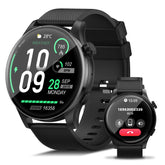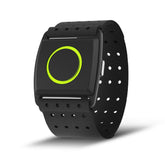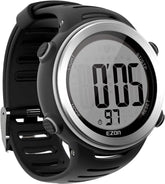Crafting the Perfect Marathon Training Regimen
Training for a marathon is an exhilarating challenge that requires careful planning, dedication, and the right tools. Whether you’re a seasoned runner or a novice tackling your first 26.2-mile journey, developing an effective marathon training plan is crucial for your success. This guide will provide a step-by-step approach to creating a well-rounded training regimen, focusing on pacing, nutrition, rest days, and how to leverage technology to track your progress. We’ll also recommend a marathon training watch, the best budget sport watch, and recommended GPS running watches to enhance your training experience.
Step 1: Establish a Training Timeline
The first step in crafting your marathon training plan is to establish a timeline. A typical marathon training program ranges from 16 to 20 weeks, depending on your current fitness level and running experience.
- Beginner Runners: Aim for a 20-week plan that allows for gradual increases in mileage.
- Intermediate Runners: A 16-week plan is often sufficient for those with a solid base.
- Advanced Runners: Experienced runners can focus on specific speed and distance goals within a 16-week timeframe.
Step 2: Create a Weekly Mileage Plan
Your weekly mileage is a crucial element of your training regimen. A well-structured plan will gradually increase your total miles each week to build endurance and strength.
Sample Weekly Mileage Breakdown
- Week 1: 15 miles
- Week 2: 18 miles
- Week 3: 20 miles
- Week 4: 22 miles (include a long run)
- Week 5: 15 miles (recovery week)
- Continue this pattern, gradually increasing mileage and incorporating rest weeks every few weeks to allow your body to recover.
Step 3: Incorporate Long Runs
Long runs are essential for building endurance and preparing both your body and mind for the marathon distance. Aim for one long run each week, gradually increasing the distance.
Long Run Guidelines
- Start with a distance that feels comfortable (e.g., 6-8 miles).
- Increase your long run by 1-2 miles each week.
- Include one or two runs of 20 miles in your training plan, ideally three weeks before the marathon.
Step 4: Focus on Pacing
Finding your ideal marathon pace is key to a successful race. Use your long runs to practice pacing strategies.
Pacing Tips
- Determine Your Goal Pace: A good starting point is to use race pace calculators based on your recent 5K or half-marathon times.
- Practice During Long Runs: Incorporate segments of your goal pace during long runs to simulate race conditions.
- Use a Marathon Training Watch: A marathon training watch that displays your current pace can help you stick to your pacing strategy during training and the race.
Step 5: Nutrition Matters
Proper nutrition is vital for optimal performance during your training and on race day. Focus on fueling your body with the right nutrients.
Nutrition Tips
- Carbohydrates: Prioritize complex carbs (whole grains, fruits, and vegetables) for energy.
- Proteins: Include lean proteins (chicken, fish, beans) to aid recovery and muscle building.
- Hydration: Stay well-hydrated during training and consume electrolyte-rich fluids on longer runs.
Race Day Nutrition
- Practice your race-day nutrition strategy during long runs, including when to consume gels or energy chews.
Step 6: Prioritize Rest and Recovery
Rest days are just as important as training days. They allow your muscles to recover and adapt, reducing the risk of injury.
Rest Day Guidelines
- Schedule at least one full rest day per week.
- Include easy runs or cross-training (swimming, cycling, yoga) to promote recovery on lighter days.
Step 7: Utilize Technology for Progress Tracking
Using technology can greatly enhance your marathon training experience. Consider the following tools:
Recommended GPS Running Watches
- Garmin Forerunner 245: Offers advanced running metrics, GPS tracking, and heart rate monitoring, perfect for serious runners.
- Polar Vantage M: Provides excellent performance tracking features and customizable training plans.
Best Budget Sport Watch
- Amazfit Bip U Pro: This affordable watch offers GPS functionality, heart rate monitoring, and multiple sport modes, making it a great choice for budget-conscious runners.
Fitness Apps
- Utilize running apps like Strava or Runkeeper to log your runs, track mileage, and connect with other runners for motivation.
Conclusion
Crafting the perfect marathon training regimen involves careful planning and dedication. By establishing a training timeline, gradually increasing mileage, incorporating long runs, focusing on pacing, prioritizing nutrition, and allowing for adequate rest and recovery, you can set yourself up for success. Leveraging technology, including amarathon training watch, the best budget sport watch, and recommended GPS running watches, will provide valuable insights and help you stay on track. Embrace the journey, stay committed, and enjoy the exhilaration of crossing the finish line on race day!









